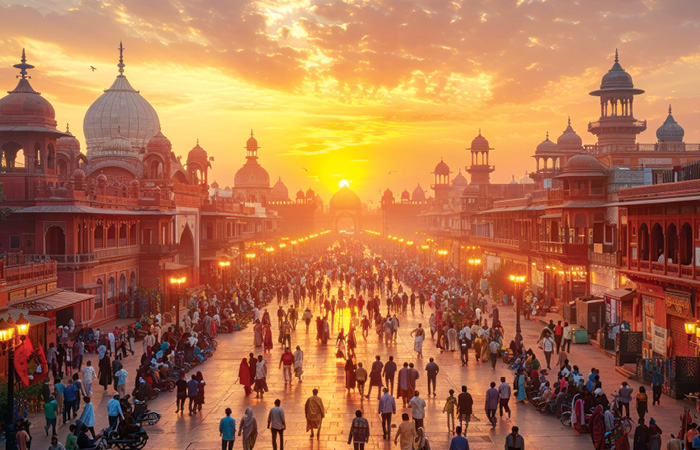Spiritual tourism is a key contributor to the travel and tourism industry of the country, which employs more than 80 million people and generates significant revenue. India’s spiritual tourism market is estimated to reach $59 bn by 2028.
Janice Alyosius
The spiritual tourism market in India will continue to grow, with the expectations of it reaching approximately US$ 59 billion by 2028, according to a report by KPMG. The report, ‘Sacred Journeys: Unfolding the evolution and growth of pilgrimage and spiritual tourism in India’.
The report explores the dynamic landscape of religious and spiritual tourism in India, highlighting its cultural, economic, and technological evolution. This sector plays a significant role in India’s tourism industry, reflecting both historical richness and contemporary growth trends.
Religious tourism is deeply rooted in India’s cultural heritage. About 20 per cent of the properties inscribed on the World Heritage List are linked to religious or spiritual contexts. Among India’s 42 UNESCO World Heritage Sites, 10 are categorised under religious heritage. The country is home to over 450,000 temples, mosques, gurudwaras, and churches managed by religious endowments and trusts.
Potential of religious and spiritual tourism
Religious tourism is a major component of domestic travel in India, accounting for over 60 per cent of domestic trips. In 2022,1,433 million domestic tourists visited Indian pilgrimage sites, while the number of foreign visitors was 6.64 million. This represents a significant increase from 677 million domestic visitors in 2021 and 1.05 million in 2020.
Post-Pandemic boom in spiritual travel
Post-pandemic, the demand for spiritual travel has surged:
- Golden Temple, Punjab: Daily visitors have increased to 100,000, compared to pre-pandemic levels.
- Vaishno Devi Shrine, J&K: Daily visitors rose to between 32,000 and 40,000 in 2022, up from 10,000 to 15,000 pre-pandemic.
- Guruvayur Devaswom, Kerala: Daily visitors reached 6,000 to 7,000 in 2022, up from 4,000.
Key religious spots include Char Dham Yatra, Do Dham Yatra, Vaishno Devi, Venkateswara Temple, Golden Temple, Ajmer Dargah Sharif, and Velankanni Church.
Economic impact
The travel and tourism industry in India employs over 80 million people and generated more than US $234 billion in revenue in 2022. The global religious tourism market is projected to reach US $2.22 billion by 2032, growing at a CAGR of 6.25 per cent. In India, spiritual tourism is anticipated to be worth around US $59 billion by 2028, with over 100 million people expected to be employed in this sector by 2030.
Evolution of religious tourism
The concept of religious tourism is evolving to align with modern travellers’ interests, emphasising meaningful, responsible, and transformative experiences. The digital influence is prominent, with travel bloggers and online reviews significantly affecting travel decisions.
v Digital pilgrimages and virtual reality: Post-pandemic, there has been a rise in virtual pilgrimages, including live streaming and online darshans. Many pilgrims now combine religious visits
with wellness retreats and
medical treatments.
v Connectivity and infrastructure: Improved infrastructure and government schemes have enhanced accessibility to pilgrimage sites, making impromptu travel decisions more feasible.
Emerging trends
The trend towards digital engagement is growing:
- Digital searches: In the past two years, searches for religious destinations in tier II and III cities have increased by 97 per cent. Specifically, searches for Ayodhya grew by 585 per cent, Ujjain by 359 per cent, and Badrinath by 343 per cent from 2022 to 2023.
- Explorer segment: This group seeks spiritual experiences beyond traditional pilgrimages, preferring lesser-known destinations.
- Internet usage: Over 50 per cent of Indians are internet users, with the number expected to grow to 900 million by 2025.
The evolution of religious and spiritual tourism in India reflects a blend of historical reverence and modern advancements. The sector’s growth is driven by cultural significance, economic potential, and technological integration.
 TravTalk India Online Magazine
TravTalk India Online Magazine





